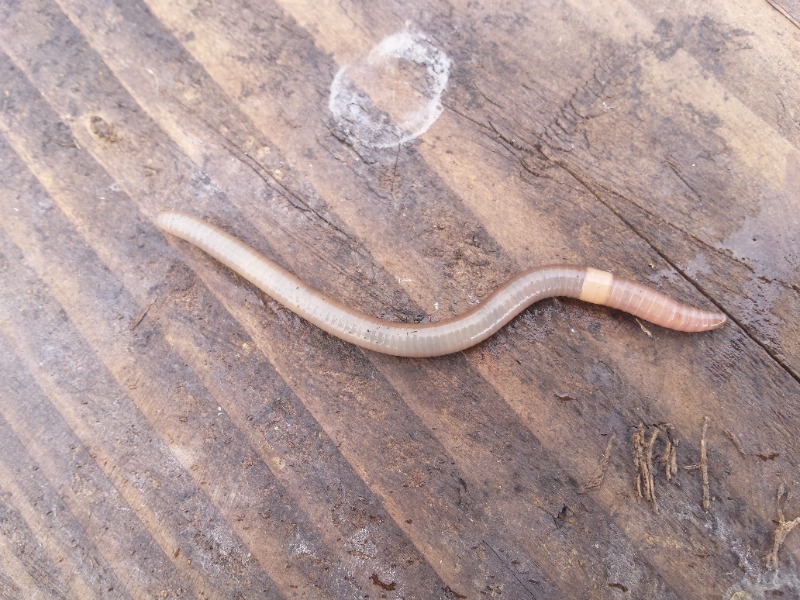Crazy Snake Worm (jumping worm) (Amynthas spp.) on Aug 14, 2020
Submitter has sample
Description of specimen
Dozens of worms in small area. near the surface. Very active, they do jump and move like a snake. They also play dead for a while. Whitish ceiltellum smooth and inline with body. worm is 4-5 inches in length.



Juveniles can be differentiated with a microscope (probably not while alive). Asian jumping worms (genus Amynthas and other Asian genera) will have setae that go around each segment. Other earthworms (including red wrigglers) typically only have setae ventrally and/or on the sides.
Red wrigglers tend to have a more distinct striped appearance and are usually are darker red brown. Their clitellum often has visible banding. Asian jumping worms (AJW) are usually more evenly light brown or gray brown (often with a metallic blue sheen) and banding isn’t visible on their clitellum. Aside from jumping into the air, AJW will shed the tip of their tail when harassed severely (like a lizard).
I’ll also note that there are many species of Asian earthworms being moved around. We only have one species confirmed in Oregon, Amythas gracilis, but I believe I have found A. agrestis as well (I need to get that confirmed!).
AJW are apparently killed by cold winter temperatures, but survive longer in sheltered environment. Based on what I’ve seen in the Willamette Valley (which is much milder than areas in the east where they’ve become established) I see adults through the winter. I suspect that our temperatures often are not lethal. Regardless, they grow quickly, and the forms that are being spread most commonly are parthenogenic (they don’t require mating).
The worm casting are apparently detrimental to plants. They are dry, hard, granular and hydrophobic. They are good at consuming the contents of composting bins (as they are at consuming leaf litter in the forest!).
Soapy water would be a good way to kill worms you find, but it wouldn’t be something to use as a treatment on the ground. I have seen research using irritants like a mustard solution to bring them to the surface, but I don’t know how well they work. I’m not aware of any good way to attract, treat, or remove the worms. This article probably has as much information as you can hope to find on their control: https://www.srs.fs.usda.gov/pubs/ja/2015/ja_2015_callaham_001.pdf
I’m afraid we don’t seem to have many options in dealing with these worms!
Let me know if you have further questions!
Josh Vlach, Entomologist
Oregon Department of Agriculture – Insect Pest Prevention and Management
635 Capitol St NE, Salem, OR 97301-2532
PH: 503-986-6458 | CELL: 503-931-1863 | WEB: Oregon.gov/ODA
Josh Vlach
Oct. 8, 2020, 7:49 a.m.